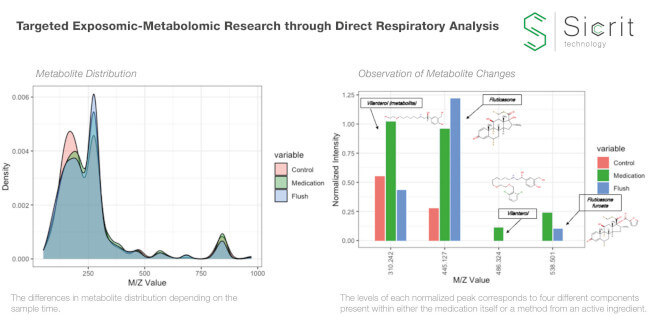
Summary
We demonstrate an extension of conventional capabilities for the SICRIT® ionization source, coupled to a high-resolution MS instrument, through a metabolomic-based breath analysis and how efficient it is to conduct targeted studies of dynamic metabolomic profiles, of the lungs, for an individual person, in realtime. Here, the SICRIT® ionization technology can allow
for real-time monitoring of an individuals’ reaction to inhalants (Relvar) and the metabolism of such inhalants in the respiratory tract. This use-case provides a new application for the SICRIT® ionization technology.
Introduction
The field of exposomics and metabolomics are closely intertwined as we begin to uncover novel exposomes and their metabolic progression. Since the world of exposomics can become rather convoluted in its definition, we hold that the study of exposomics is the measure of all exposures of an individual in a lifetime and how these exposures effect overall health. This includes everything from toxic industrial chemicals to therapeutic pharmaceuticals and cosmetics. The average human is exposed to over 700,000 chemicals a day, where only a handful are purposeful. All these chemicals must be processed and metabolized by the enzymes within our
cells, where each iteration of biotransformations decreases the hydrophobicity (and hopefully the toxicity), rendering an inert, water-soluble xenobiotic. For this process, the lungs can be the prime target of exposomes, both toxic and therapeutic. Rapid metabolism and absorption of most exposomes occurs within the lung endothelium due to an increase in surface area and increased volume of CYP450 enzymes within the tissue. With the rapid nature of these metabolic processes, we are often unable to effectively measure the minute changes that occur in real-time, this inability to do real-time monitoring in most methods presents an issue for those interested in such observations. However, with the SICRIT® ionization technology we are able to perform real-time online monitoring, which allows us to view dynamic systems, unlike other ionization methods.





